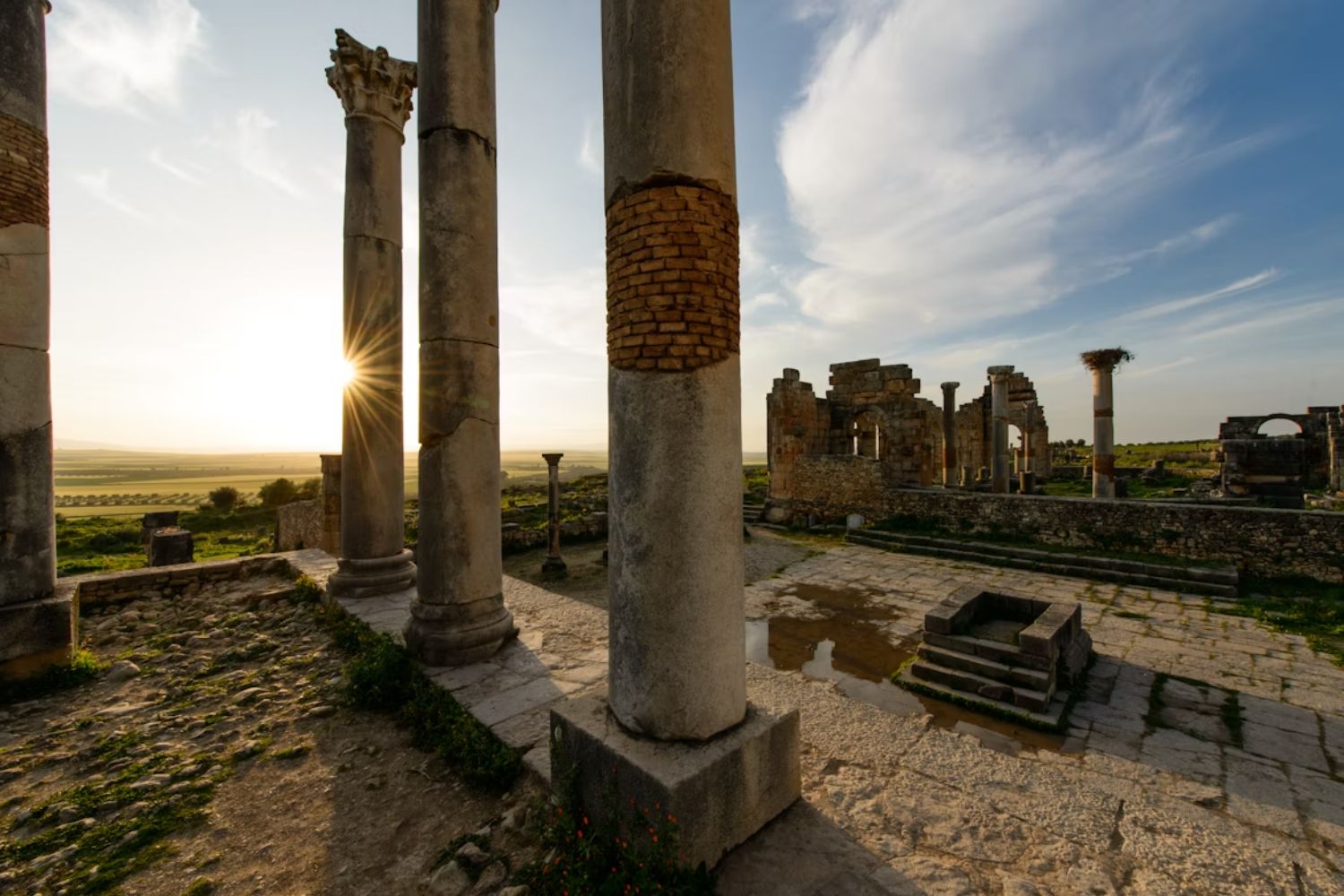Tucked away in the heart of northern Morocco, near the modern city of Meknes, lies one of the most remarkable archaeological sites in North Africa — the Archaeological Site of Volubilis. Once a thriving Roman city, Volubilis stands as a living testament to Morocco’s deep historical roots and its connection to the vast expanse of the Roman Empire.
With its remarkably preserved ruins, intricate mosaics, and panoramic views of the countryside, Volubilis draws history buffs, archaeologists, and curious travelers alike. But this isn’t just a collection of ancient stones — it’s a gateway to understanding the powerful civilizations that once ruled Morocco and shaped the Mediterranean world.

Volubilis and the Roman Empire: A Historical Overview
Volubilis, Morocco, was originally a Berber settlement before becoming a Phoenician and later a Carthaginian outpost. However, it truly rose to prominence in the 1st century AD under the Roman Empire. Designated as a Roman municipium, Volubilis became the administrative center of the Roman province of Mauretania Tingitana.
This city played a critical role in the empire’s trade and governance. It was a hub for the export of olive oil, grains, and wild animals used in Roman amphitheaters. At its peak, it housed over 20,000 inhabitants — an impressive number for a provincial city in Roman North Africa.
If you’re looking at a Volubilis Roman Empire map, you’ll notice its strategic location — not far from the Atlantic coast and near other major Roman cities. Its location enabled control over trade routes and regional tribes, allowing Rome to maintain influence in the region for centuries.

Volubilis Roman Empire Today
Despite centuries of earthquakes, invasions, and neglect, Volubilis Roman Empire today still echoes its former grandeur. Declared a UNESCO World Heritage Site in 1997, this site is one of the best-preserved Roman ruins in Morocco. Visitors can walk along the Decumanus Maximus, admire the Basilica, the Triumphal Arch of Caracalla, and various ornate villas decorated with detailed mosaics.
The remains give us key Volubilis Roman Empire facts — like how advanced Roman urban planning, aqueduct systems, and artistic expression flourished in this remote outpost.

Volubilis Roman Empire Kings & Local Power
Even though Rome ruled from afar, local Berber kings often played a crucial role in governing the area. One of the most famous rulers was King Juba II, who married Cleopatra Selene II, the daughter of Cleopatra and Mark Antony. Their lineage symbolizes the blend of Berber, Roman, Egyptian, and Greek heritage — truly a melting pot of cultures.
After Rome withdrew from the region in the 3rd century, local dynasties continued to use Volubilis as a political center, further solidifying its place in Morocco’s royal history. This makes the Volubilis Roman Empire kings an essential part of both Moroccan and Roman narratives.
Volubilis Meaning and Cultural Significance
The meaning of Volubilis comes from Latin, referring to the “twisting” or “turning” — likely inspired by the nearby river or the twining of olive vines for which the region is famous. More than just ruins, Volubilis is a cultural time capsule, illustrating the interaction between Roman imperialism and indigenous Berber traditions.
Its role in shaping the spiritual, economic, and architectural trajectory of Morocco cannot be overstated. Walking through its remains offers a unique chance to touch history and experience the grandeur of an empire that once ruled much of the known world.
Volubilis Morocco Map: How to Visit
To find your way, use any Volubilis Morocco map to see it’s located about 30 kilometers north of Meknes. You can visit from Meknes or even as a day trip from Fez. The site is best explored with a local guide who can help you visualize what each structure once looked like and its purpose.
There’s no better place to connect with the Roman heritage in Africa. From the Forum to the Temple of Jupiter, every stone tells a story — of emperors, citizens, wars, and daily life in a city that once stood at the edge of the known world.
Map of the Archaeological Site of Volubilis
Explore the exact location of Volubilis, Morocco – one of the most important Roman archaeological sites in North Africa.
Conclusion: Why Volubilis Still Matters
The Archaeological Site of Volubilis is more than a tourist attraction — it’s a cornerstone of Moroccan and Roman identity. Whether you’re exploring the Volubilis Roman Empire history, admiring detailed mosaics, studying ancient governance by Volubilis Roman Empire kings, or simply enjoying the sweeping views, you’re engaging with one of North Africa’s most important heritage sites.
So next time you think of Roman ruins, don’t just think of Rome or Pompeii — think of Volubilis, Morocco.
